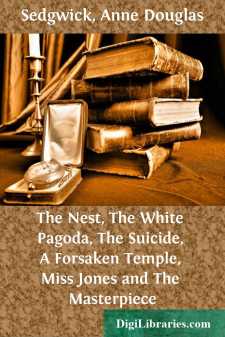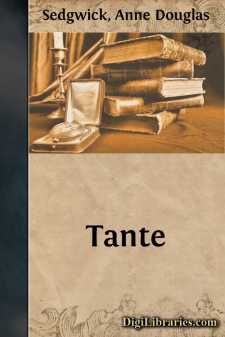Categories
- Antiques & Collectibles 13
- Architecture 36
- Art 48
- Bibles 22
- Biography & Autobiography 813
- Body, Mind & Spirit 142
- Business & Economics 28
- Children's Books 15
- Children's Fiction 12
- Computers 4
- Cooking 94
- Crafts & Hobbies 4
- Drama 346
- Education 46
- Family & Relationships 57
- Fiction 11828
- Games 19
- Gardening 17
- Health & Fitness 34
- History 1377
- House & Home 1
- Humor 147
- Juvenile Fiction 1873
- Juvenile Nonfiction 202
- Language Arts & Disciplines 88
- Law 16
- Literary Collections 686
- Literary Criticism 179
- Mathematics 13
- Medical 41
- Music 40
- Nature 179
- Non-Classifiable 1768
- Performing Arts 7
- Periodicals 1453
- Philosophy 64
- Photography 2
- Poetry 896
- Political Science 203
- Psychology 42
- Reference 154
- Religion 513
- Science 126
- Self-Help 84
- Social Science 81
- Sports & Recreation 34
- Study Aids 3
- Technology & Engineering 59
- Transportation 23
- Travel 463
- True Crime 29
Amabel Channice
Description:
Excerpt
Lady Channice was waiting for her son to come in from the garden. The afternoon was growing late, but she had not sat down to the table, though tea was ready and the kettle sent out a narrow banner of steam. Walking up and down the long room she paused now and then to look at the bowls and vases of roses placed about it, now and then to look out of the windows, and finally at the last window she stopped to watch Augustine advancing over the lawn towards the house. It was a grey stone house, low and solid, its bareness unalleviated by any grace of ornament or structure, and its two long rows of windows gazed out resignedly at a tame prospect. The stretch of lawn sloped to a sunken stone wall; beyond the wall a stream ran sluggishly in a ditch-like channel; on the left the grounds were shut in by a sycamore wood, and beyond were flat meadows crossed in the distance by lines of tree-bordered roads. It was a peaceful, if not a cheering prospect. Lady Channice was fond of it. Cheerfulness was not a thing she looked for; but she looked for peace, and it was peace she found in the flat green distance, the far, reticent ripple of hill on the horizon, the dark forms of the sycamores. Her only regret for the view was that it should miss the sunrise and sunset; in the evenings, beyond the silhouetted woods, one saw the golden sky; but the house faced north, and it was for this that the green of the lawn was so dank, and the grey of the walls so cold, and the light in the drawing-room where Lady Channice stood so white and so monotonous.
She was fond of the drawing-room, also, unbeautiful and grave to sadness though it was. The walls were wainscotted to the ceiling with ancient oak, so that though the north light entered at four high windows the room seemed dark. The furniture was ugly, miscellaneous and inappropriate. The room had been dismantled, and in place of the former drawing-room suite were gathered together incongruous waifs and strays from dining- and smoking-room and boudoir. A number of heavy chairs predominated covered in a maroon leather which had cracked in places; and there were three lugubrious sofas to match.
By degrees, during her long and lonely years at Charlock House, Lady Channice had, at first tentatively, then with a growing assurance in her limited sphere of action, moved away all the ugliest, most trivial things: tattered brocade and gilt footstools, faded antimacassars, dismal groups of birds and butterflies under glass cases. When she sat alone in the evening, after Augustine, as child or boy, had gone to bed, the ghostly glimmer of the birds, the furtive glitter of a glass eye here and there, had seemed to her quite dreadful. The removal of the cases (they were large and heavy, and Mrs. Bray, the housekeeper, had looked grimly disapproving)—was her crowning act of courage, and ever since their departure she had breathed more freely. It had been easier to dispose of all the little colonies of faded photographs that stood on cabinets and tables; they were photographs of her husband's family and of his family's friends, people most of whom were quite unknown to her, and their continued presence in the abandoned house was due to indifference, not affection: no one had cared enough about them to put them away, far less to look at them. After looking at them for some years,—these girls in court dress of a bygone fashion, huntsmen holding crops, sashed babies and matrons in caps or tiaras,—Lady Channice had cared enough to put them away. She had not, either, to ask for Mrs. Bray's assistance or advice for this, a fact which was a relief, for Mrs. Bray was a rather dismal being and reminded her, indeed, of the stuffed birds in the removed glass cases. With her own hands she incarcerated the photographs in the drawers of a heavily carved bureau and turned the keys upon them.
The only ornaments now, were the pale roses, the books, and, above her writing-desk, a little picture that she had brought with her, a water-colour sketch of her old home painted by her mother many years ago.
So the room looked very bare. It almost looked like the parlour of a convent; with a little more austerity, whitened walls and a few thick velvet and gilt lives of the saints on the tables, the likeness would have been complete. The house itself was conventual in aspect, and Lady Channice, as she stood there in the quiet light at the window, looked not unlike a nun, were it not for her crown of pale gold hair that shone in the dark room and seemed, like the roses, to bring into it the brightness of an outer, happier world....





